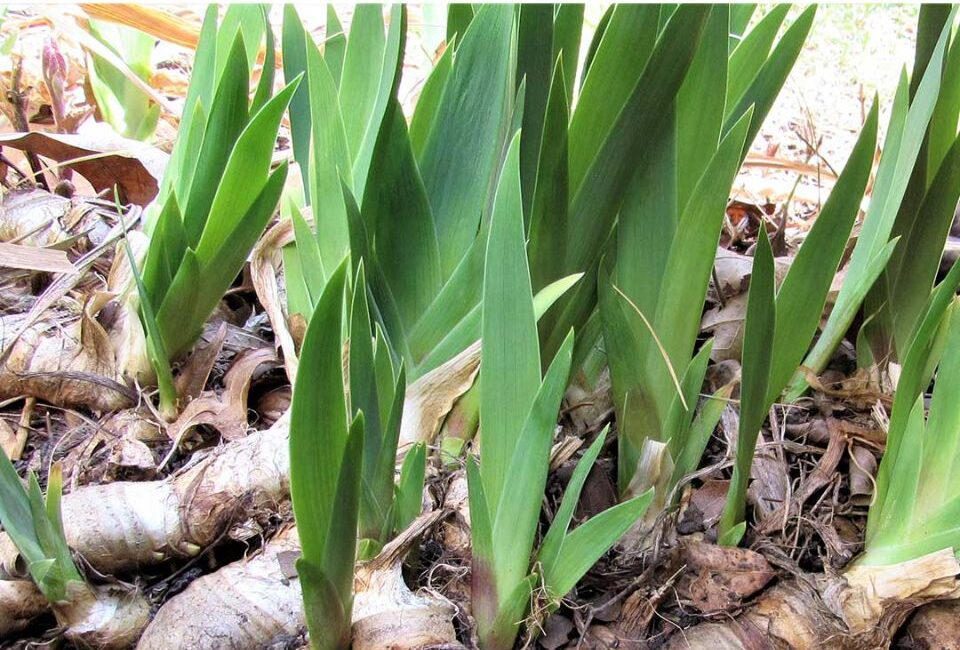Irises are one of the most cherished flowers among gardeners due to their striking appearance, vibrant colors, and unique shapes. Their large, elegant flowers make them a showstopper in any garden, but to ensure these perennials bloom beautifully each season, it’s crucial to provide them with the right care, especially in the spring. This time of year marks the awakening of irises from their winter dormancy, making it the perfect opportunity to give them the attention they need to thrive.
In this article, we will delve deeply into the spring maintenance needed for irises, ensuring that your plants are well-prepared for a spectacular display. From assessing soil conditions to pest control, and everything in between, these essential steps will help gardeners foster an environment that encourages vibrant, healthy iris blooms.
Understanding the Importance of Spring Maintenance for Irises
Spring maintenance plays a pivotal role in ensuring irises produce their best blooms. The process of waking up from their winter dormancy and beginning their growth cycle in the spring requires the right amount of care and attention. By focusing on tasks such as soil preparation, pruning, and pest control, gardeners can provide irises with the optimal conditions to flourish.
Why is spring so critical for iris maintenance? Without proper care during this time, several issues may arise. These include overcrowded plantings, nutrient deficiencies, and pest problems, all of which can lead to poor blooming or even the decline of the plants. By proactively addressing these issues in spring, you set the stage for a healthy, thriving iris garden throughout the growing season.
Preparing Your Garden for Irises: Essential Steps
Before turning your attention to the specific care of individual iris plants, it’s important to focus on the overall preparation of the garden area where your irises will grow. Preparing the soil, clearing debris, and addressing any pest problems are essential to creating an environment where irises can thrive. Here’s how to get started:
1. Assessing Soil Conditions for Optimal Iris Growth
Irises thrive in soil that is both fertile and well-drained. Soil testing is the first step in assessing whether your garden is ready for planting. Begin by testing the soil’s pH level. The ideal pH range for irises is between 6.0 and 7.0, which is slightly acidic to neutral. If your soil falls outside of this range, you may need to amend it. Add lime to raise the pH (for more alkaline conditions) or sulfur to lower it (for more acidic conditions).
In addition to adjusting pH levels, enrich your soil by incorporating organic matter such as compost or well-rotted manure. Organic matter improves soil structure, promotes healthy root development, and enhances nutrient retention, giving irises the resources they need to grow vigorously.
2. Ensuring Proper Drainage to Prevent Root Rot
Proper drainage is one of the most important factors in ensuring the health of your irises. Irises are prone to root rot if their roots sit in waterlogged soil. To prevent this, choose locations for planting that provide excellent drainage. If your garden has heavy clay soil, you can improve drainage by mixing in sand or gravel. Raised beds or slopes are also great options for planting irises, as they prevent water from collecting around the roots. Irises should never be planted in low-lying areas where water tends to pool, as this increases the risk of rot.
3. Pruning and Cleaning Up Last Year’s Foliage
In early spring, before new growth emerges, it’s important to prune and clean up any dead or damaged foliage left from the previous season. This is an essential step for several reasons:
- It helps prevent the buildup of diseases and pests that may have overwintered in old plant material.
- It improves airflow around the plants, reducing the likelihood of fungal infections.
- It allows sunlight to reach the rhizomes and new shoots.
Use clean, sharp pruning shears to cut back the foliage to about 6 inches above the rhizome. Be cautious not to damage the rhizomes or crowns of the plants while trimming.
4. Dividing Overcrowded Clumps for Healthier Blooms
Irises tend to become overcrowded as they grow, which can lead to poor flowering. To maintain a vibrant display, it’s essential to divide clumps of irises every three to five years. Overcrowding can lead to competition for nutrients, water, and space, resulting in weaker plants with fewer blooms.
To divide your irises:
- Dig up the rhizomes carefully, using a spade or fork.
- Inspect the rhizomes for any signs of disease or damage. Discard any that are soft, rotten, or have disease spots.
- Separate the healthy rhizomes, ensuring each one has a section of roots and a growing point.
- Replant the healthy rhizomes in new locations with sufficient space to allow for proper air circulation and root development.
This step not only helps the plant thrive but also gives you more irises to share or plant elsewhere in your garden.
5. Fertilizing Irises: Choosing the Right Nutrients
Irises require a balanced fertilizer to encourage healthy growth and flowering. In early spring, apply a balanced, slow-release fertilizer with a ratio such as 10-10-10 or 5-10-10. These numbers indicate the levels of nitrogen, phosphorus, and potassium, which are essential for plant growth, root development, and flower production.
Be cautious not to use a fertilizer that’s too high in nitrogen, as this can lead to excessive foliage growth at the expense of blooms. Apply the fertilizer around the base of the plants, avoiding direct contact with the rhizomes to prevent fertilizer burn. Water the fertilizer in well to ensure it reaches the root zone.
6. Watering Techniques: How Much and How Often
While irises are somewhat drought-tolerant, they still need consistent watering, especially during their active growth period in the spring. Water deeply once a week, ensuring the soil stays moist but not waterlogged. Adjust your watering schedule based on weather conditions and rainfall. Overwatering can lead to root rot, so it’s crucial to avoid creating waterlogged conditions.
7. Mulching: Benefits and Best Practices
Mulching is another important aspect of iris care in spring. A light layer of organic mulch, such as shredded bark, wood chips, or straw, helps retain moisture, suppress weeds, and regulate soil temperature. Mulch also improves soil health by adding organic material as it breaks down.
When applying mulch around irises, be careful not to pile it too high around the rhizomes. Excess mulch can trap moisture, leading to rot. A thin layer (about 1-2 inches) is sufficient to achieve the benefits of mulching without compromising plant health.
8. Pest and Disease Control: Prevention and Treatment
Irises are prone to certain pests and diseases that can compromise their health and beauty. Common pests include iris borers, which damage the rhizomes, and aphids, which feed on the leaves. To control pests, inspect your plants regularly for signs of infestation and treat them with insecticidal soap or neem oil.
Irises are also susceptible to diseases such as leaf spot and rust, which can cause unsightly blemishes and damage to the foliage. To prevent these diseases, maintain proper air circulation around your plants, avoid overhead watering, and remove any infected foliage immediately.
9. Supporting Iris Stalks: Methods to Prevent Toppling
Certain taller varieties of irises, particularly bearded irises, can benefit from staking to support their tall flower stalks. In windy or rainy conditions, the weight of the blooms can cause the stems to topple over, damaging the plants and detracting from the beauty of the display.
To prevent this:
- Use bamboo stakes, metal supports, or plant ties to gently secure the flower stalks.
- Make sure the support is sturdy enough to hold the weight of the flowers, especially if you’re dealing with large or top-heavy blooms.
10. Monitoring Sunlight Exposure for Optimal Growth
Sunlight is essential for irises to bloom to their full potential. These plants require full sun and should receive at least 6 hours of direct sunlight per day. If your irises are planted in a shaded area, they may not flower as well or at all.
If you notice your irises are not getting enough sunlight, consider relocating them to a sunnier spot in your garden. Proper sunlight exposure encourages photosynthesis, which is crucial for flower production.
11. Companion Planting: Enhancing Iris Beauty and Health
Companion planting involves planting other plants alongside your irises to enhance the overall garden’s beauty and health. Plants like daylilies, lavender, and peonies can complement irises with their contrasting colors and textures. Additionally, some companion plants can help deter pests and improve soil health.
For example, lavender has natural pest-repellent properties that can help protect your irises from insects. Peonies and daylilies not only provide additional interest but also work well in similar soil conditions to irises.
12. Avoiding Common Mistakes in Iris Care
To ensure your irises thrive, avoid some of the common mistakes that many gardeners make:
- Overwatering: While irises need regular water, too much water can lead to root rot.
- Planting too deeply: Ensure rh
izomes are planted just below the soil surface—burying them too deep can inhibit blooming.
- Neglecting to divide: Irises need to be divided every few years to maintain healthy growth and blooming potential.
Conclusion
Spring is a vital time for ensuring your irises are well-prepared for a thriving growing season. By following these essential care steps, from assessing soil conditions to proper pruning, fertilizing, and pest control, you’ll provide your irises with the perfect environment to produce stunning blooms. With the right preparation and attention, your irises will not only survive the season but will flourish, filling your garden with vibrant colors and beauty. So roll up your sleeves, and get ready to give your irises the care they need to bloom at their best!




